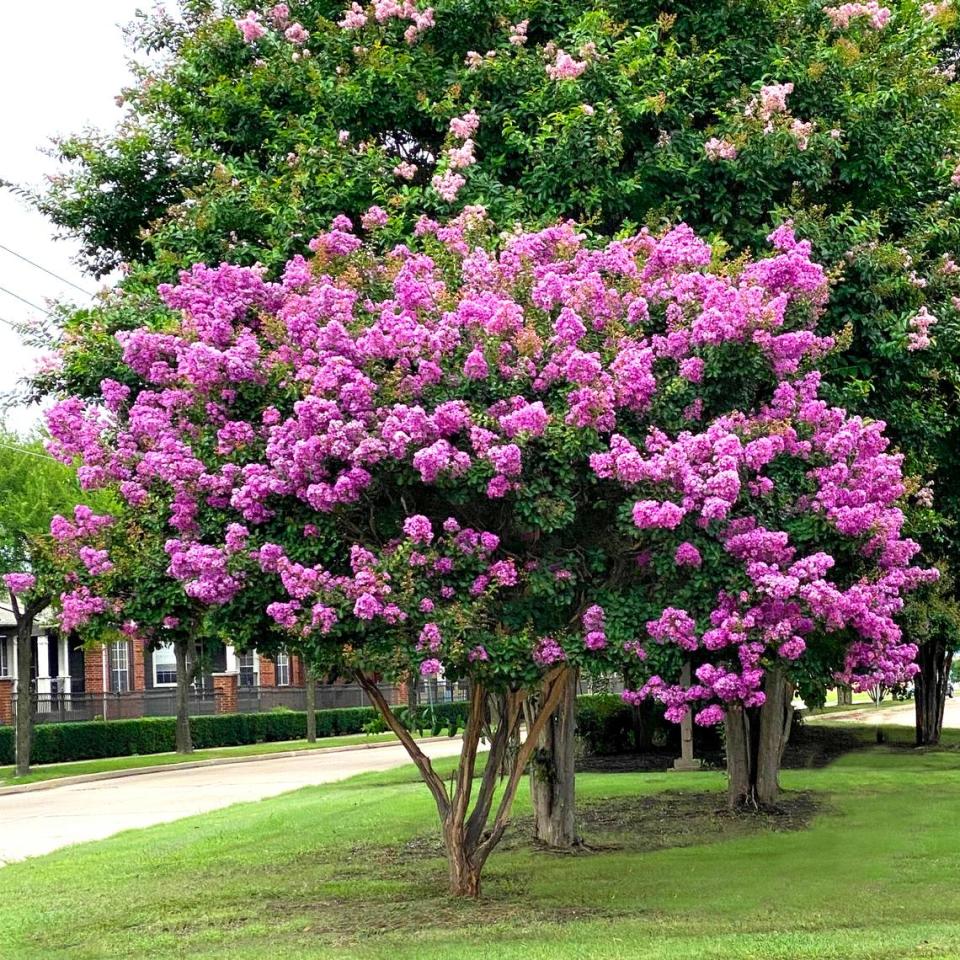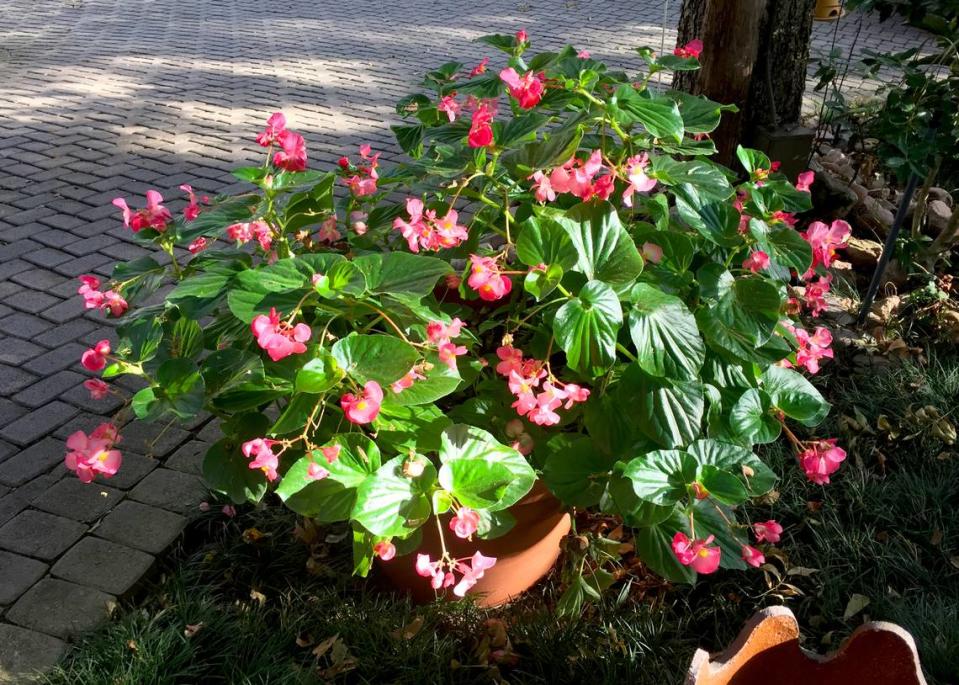Looking for summer color in your North Texas landscape? Here are 5 candidates
If I could only have five plants for color in my North Texas landscape in summer, these are the ones I’d choose out of the long list of applicants. Mind you I’d be leaving a lot of fine plants in line behind them, but I’d have five plants that would grow and perform through all the heat and still look just as good when the cool fronts of fall finally roll into town.
Catawba crape myrtle. We’ve had our little “Catawba” talk here before. I’ve admitted that as I’ve grown older, I’ve learned that it’s perfectly fine to like purple. (Horned Frog fans, of course, will tell us it always has been.) Purple crape myrtles blend with all other crape myrtle colors — red, pink, white, and lavender. Where others may clash, purples play well.
But Catawba isn’t just any old purple crape myrtle. It’s a rich medium-purple that blooms three or four times per summer. Its flower heads are borne atop 15 foot plants, meaning that this plant stays neatly in bounds and compact. Even those people who still feel they must barbarically chop off the tops of their tree-form crape myrtles will have a hard time convincing themselves to do so with Catawba. (Hooray!)
Catawba was the first cultivar introduced by Dr. Donald Egolf from the United States National Arboretum. I had the great fortune of getting to meet and work briefly alongside Don in his crape myrtle research. He went on to introduce 28 other varieties with Indian tribal names, all superior types. But Catawba is still my favorite.

Gold Star Esperanza. This would be my tall background showstopper for beds. I’m a sucker for bright, buttery yellow blooms, and this plant keeps ‘em coming month after month. It’s a tall annual for us here in the Metroplex, growing to 4 to 6 ft. tall and wide. However, in South Texas where winters are milder it can make a small shrub or even a short tree.
Renowned horticulturist Greg Grant found and selected this superior strain for its continuous blooming habit. Botanically it’s Tecoma stans. The native species in Southwest Texas doesn’t come into flower until much later in the season, but Greg brought us this highly improved form. This is why you want to buy Gold Star Esperanza with its name tag and Texas Superstar® label so you’re sure you’re getting the real deal and not just a pretender.
Coleus. In this case I’m not going to specify a cultivar. There are so many. The University of Florida has been doing heroic breeding work on this great group of foliar annuals for the past 25 years. That explains why we’re seeing a constant supply of spectacular types that are (a) reluctant to bloom and (b) tolerant of Texas sun most or all of the day. Your local nursery will have nice specimens available for sale. I’ve been growing coleus for 65 years. I’ll be featuring them in more detail here in a few weeks.

Dragon Wing Begonias. I’m a giant fan of all the waxleaf begonias anyway. When I saw my first Dragon Wing with its oversized leaves and gigantic flowers, it was love at first sight. I bought that plant. It was in a big hanging basket, and it wasn’t cheap. But I could picture it being repotted into a very large patio pot along our courtyard, and that’s exactly what I did. It never missed a beat. By the end of that growing season it was a real work of art.
Dragon Wings grow to be 15 to 20 inches tall and wide. Their shiny green leaves grow to 2 to 3 inches long, and the flowers are bigger than golf balls, either cherry red or bright pink. The plants grow best with a bit of early morning sun and then light shade the balance of the day. They need constant moisture, and they’ll grow best if you feed them each time that you water them. Use a water-soluble plant food and a siphoning proportioner. Feed them at least weekly.

Crotons. Curious, isn’t it, that two of my five favorite summer color plants are foliage plants. And that both start with the letter “C.” And that neither ends with “-aladiums.” Don’t get me wrong – caladiums would make my second list of five great summer plants, but crotons in all their leaf shapes and plant sizes have been a part of every summer color planting in my landscape for the past 45 years.
However, my plants are always in pots and never in beds. I start out with 5-gal. plants, often bought in the September while nurseries have their fall décor out on sale. They’re nestled in with shocks of corn, pumpkin, and bales of hay. But once Halloween passes I’m not going to let my beautiful crotons freeze. They get whisked right into my greenhouse to await the following spring. That’s when I repot them into larger decorative containers so they can grow in the warm Texas summer.
Crotons color up best when they get early and mid-morning sun, then protection from the late morning and afternoon rays. You’ll get many inches of new growth in blazing shades of reds, oranges, yellows, burgundy, and, of course, green.
I’ve grown crotons in pots as large as 42 inches in diameter. Those plants eventually reached 8-9 ft. tall, and they became architectural anchors in our summer gardens. I was fortunate to have a greenhouse to over-winter them, but a bright sunroom would have sufficed for several years.

